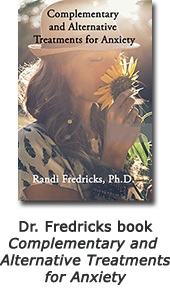Breath Work
 Breath work is an experiential approach to psychotherapy based on the use of a specific breathing method.
Breath work is an experiential approach to psychotherapy based on the use of a specific breathing method.
Practices such as Yoga, T’ai chi, and Qigong utilize breath as a means to direct and enhance the body’s energy and aid in the release of old emotions. Similarly the many schools and teachers of mindfulness are also using breathing techniques that can date back to and beyond the time of the Buddha.
If you have anxiety, deep breathing exercises can be the single most important coping technique. Comfortable, deep breathing is the key to relaxation. Traditional relaxation methods such as meditation, hypnosis and guided visualization place a central emphasis on breathing.
How Breath Work Helps Anxiety
The deep breathing that occurs during breath work stimulates our parasympathetic nervous system (PNS), which is responsible for the reaction the body has when it is at rest. The PNS functions in an opposite manner to the sympathetic nervous system, which stimulates activities associated with stress and the fight-or-flight response.
The fight or flight response is warranted in times of legitimate crisis. But when this heightened state is induced unnecessarily, it can trigger panic and anxiety attacks. In some cases the individual begins to hyperventilate. Rapid breathing then causes more carbon dioxide to be expelled at a greater rate.
The low levels of carbon dioxide make the body more alkaline, which leads to even more hyperventilation. The result is a vicious cycle that not only prevents the body from slowing down but also interferes with the blood’s ability to release oxygen to the tissues.
By voluntarily changing the rate, depth, and pattern of breathing, we can change the messages being sent from the body’s respiratory system to the brain. In this way, breathing techniques provide a portal to the autonomic communication network through which we can, by changing our breathing patterns, send specific messages to the brain using the language of the body, a language the brain understands and to which it responds. Messages from the respiratory system have rapid, powerful effects on major brain centers involved in thought, emotion, and behavior.
Breath Work Exercise
 One natural anxiety remedy I recommend for my patients is gentle breathing exercises. The following is an example of such an exercise.
One natural anxiety remedy I recommend for my patients is gentle breathing exercises. The following is an example of such an exercise.
- Place one hand just above your belly button and the other on your chest over the breastbone.
- Open your mouth slightly and gently sigh, letting your shoulders and the muscles of your upper body relax, down, with the exhale.
- Close your mouth and pause for a few seconds.
- With your mouth closed, inhale slowly through your nose by pushing your stomach out against your hand. Stop when you have inhaled as much air as you can comfortably.
- Pause for a moment.
- Open your mouth and exhale through your mouth by pulling your belly in.
- Pause again for a moment.
- Repeat steps 4-7.
Practicing Breath Work for Anxiety
Since breathing is something we have control over, it is a useful tool for achieving a relaxed and clear state of mind. Don’t wait until fight or flight kicks in before becoming aware of how you breathe.
There are many breathing exercises for anxiety that you can implement when you’re stressed or anxious. By using these techniques, combined with a general awareness of your breath throughout your day, you will eventually master one of the most effective anxiety-management strategies out there.




